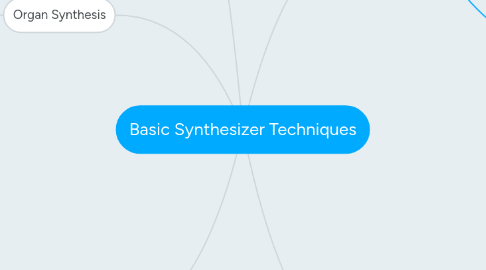
1. Organ Synthesis
1.1. AMP Env
1.1.1. Sustaining On/Off Switch
1.1.2. Short Release
1.1.3. Percussive Attack
1.1.4. Soft Attack
1.2. OSC Mix
1.2.1. Sine + Waveform Mix
1.3. FX
1.3.1. Reverb
1.4. Voicing
1.4.1. Polyphonic
1.4.2. Up to 12 Voices
2. Lead Synthesis
2.1. OSC
2.1.1. Saw + Waveform Mix
2.1.2. Pitch Bend Modulation
2.2. Lowpass Filter
2.2.1. Cutoff Frequency Mod
2.2.2. Modwheel Assignment
2.2.3. Resonance
2.2.4. Drive
2.3. AMP
2.3.1. VCA Velocity Mod
2.3.2. AMP Env
2.4. Voicing
2.4.1. Monophonic
2.4.2. Legato
2.4.3. Glide
2.5. FX
2.5.1. Reverb
2.5.2. Delay
2.5.3. Chorus
2.5.4. Flanger
3. FX Patch Synthesis
3.1. OSC
3.1.1. Noise or any suitable mix
3.2. AMP
3.2.1. Env
3.3. FX
3.4. LFO
3.5. Filter
4. Keyboard Synthesis
4.1. OSC
4.1.1. Waveform Mix
4.2. Lowpass Filter
4.2.1. Cutoff Modulation
4.3. AMP
4.3.1. Volume
4.3.2. Pitch Keytracking
4.3.3. AMP Env
4.3.3.1. Decay
4.3.3.2. Release
4.3.4. Pan
4.3.5. VCA Velocity Mod
4.4. Voicing
4.4.1. Polyphonic
4.4.2. Up to 24 Voices
4.4.3. Sustain Pedal
4.5. FX
4.5.1. Pan Modulation
4.5.2. Reverb
4.5.3. Chorus
4.5.4. Delay
4.6. LFO Modulation
5. Pad Synthesis
5.1. OSC
5.1.1. Square PWM
5.1.2. Stack Detune
5.2. LFO Modulation
5.2.1. Sine
5.2.2. Ramp
5.3. AMP
5.3.1. Amp Env
5.3.1.1. Average Attack
5.3.1.2. No Decay
5.3.1.3. Max Sustain
5.3.1.4. Average Release
5.4. FX
5.4.1. Chorus
5.4.2. Delay
5.4.3. Filters
5.5. Filter
5.5.1. LP/BP/Notch
5.5.1.1. Cutoff
5.5.1.2. Resonance
5.6. Voicing
5.6.1. Polyphonic
5.6.2. Up to 10 Voices
